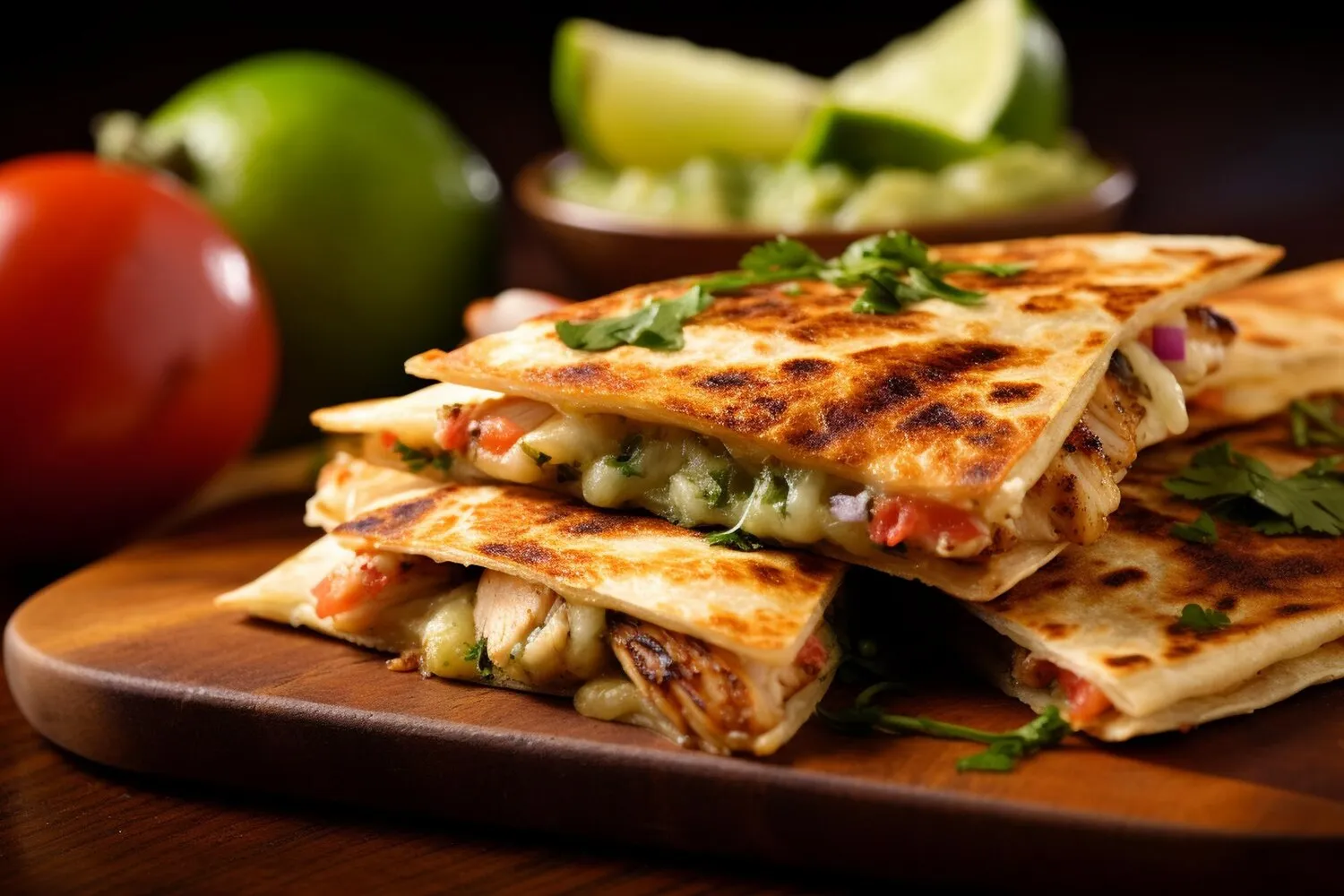
Quesadillas
Quesadillas are offered with different fillings. Details depend on current menu.
Nutrition Facts
* The % Daily Value (DV) tells you how much a nutrient in a serving of food contributes to a daily diet. 2,000 calories a day is used for general nutrition advice.
The quesadilla's history dates back to colonial Mexico. While the exact origins are murky, it's believed to have evolved as a simple street food made with available ingredients, blending indigenous tortillas with introduced cheeses and meats from Europe. Over time, regional variations emerged, reflecting local ingredients and culinary preferences.
Quesadillas are a ubiquitous part of Mexican cuisine, enjoyed as a quick snack, light meal, or appetizer. They are deeply ingrained in the culture, found everywhere from street food stalls to upscale restaurants.
Street Food Staple
Quesadillas are a quintessential street food, providing an affordable and satisfying meal for people on the go. They are often sold from carts or small stands, offering a variety of fillings.
Family Meal
Quesadillas are a popular choice for family meals, especially for children. They are easy to prepare and customize, allowing everyone to choose their favorite fillings.
Regional Variations
Different regions of Mexico have their own unique variations of quesadillas, reflecting local ingredients and culinary traditions. Some regions use specific types of cheese, meats, or vegetables that are characteristic of their area.
The main flavors of a quesadilla are typically savory and cheesy, often complemented by the fillings. The tortilla provides a base flavor of corn or flour, while the cheese adds a rich and creamy element.
Quesadillas generally feature a base of melted cheese, commonly Oaxaca, Chihuahua, or Monterey Jack, providing a mild, melty flavor. Fillings vary widely, influencing the overall flavor profile. Common additions include grilled chicken or steak (offering a savory, meaty taste), sauteed vegetables like onions, peppers, and mushrooms (adding sweetness and earthiness), and spicy elements like jalapeños or salsa (introducing heat and complexity). The type of tortilla (corn or flour) also influences the flavor, with corn tortillas having a slightly earthier taste.
Cheese Choice
Opt for cheeses that melt well, such as Oaxaca, Chihuahua, or Monterey Jack. Avoid cheeses that are too dry or oily, as they won't melt properly.
Tortilla Warmth
Warm the tortillas slightly before adding fillings. This makes them more pliable and less likely to tear when folding or grilling.
Even Cooking
Cook the quesadilla over medium heat to ensure the cheese melts completely and the tortilla turns golden brown and crispy without burning. Press down gently with a spatula to promote even cooking.
Filling Consistency
Avoid overfilling the quesadilla, as this can make it difficult to fold and cook evenly. Spread the fillings in a thin layer to ensure they heat through properly.
Explore additional Mexican dishes and restaurants
Explore MexicanDiscover top dining spots and culinary experiences in Uppsala.
Explore UppsalaLearn more about the food culture, restaurant scene, and culinary heritage of Sweden.
Explore Sweden